The AutoGuide Guide to Gifts for Car Lovers

If you’re not a car person, and you want gifts for car lovers, you might head over to Amazon’s “Most Wished For” automotive products and find what looks like a random mix of great and terrible gift ideas, without any way of telling which one is which. That’s one of the main reasons we’ve spent the last 12 months evaluating, purchasing, and testing automotive parts and accessories, sometimes for months, figuring out which one are worth your money ( and which ones aren’t).
We didn’t literally bust our knuckles trying to come up with gifts for car lovers (it’s not just gifts for car guys, people), but when our video team asked us for some suggestions, there were a few standouts that jumped to the top of the list. We chose an assortment of great shop tools, supplies, and accessories that you can use anywhere around the house; and some fun and useful gadgets and toys for all ages.
Everything we picked as a gift for your favorite car lover is something that AutoGuide editors have personally used, whether or not we’ve recommended it before. A couple of them are things we’ve been using around the AutoGuide Garage forever, part of our everyday routine of working on cars and testing products. They may even be things you don’t think about, but just make your work—and your life—a little bit better each time you use them.
Our guide to gifts for car lovers covers as wide a budget range as we could come up with, from “nice cup of coffee” to “this is the only gift you’re getting this year,” so if you have a car lover in your life (or you want to treat yourself), you should find something you’ll like. They’re certainly all things we would love to get as a gift, ourselves.
Table of contents
- AutoGuide Tool of the Year: DeWalt DCF900 High Torque Impact Wrench
- NOCO Boost Plus GB40 jump starter
- Healthmate Heated Seat Cushion
- Topdon ArtiDiag600S diagnostic tablet
- Anker 521 Portable Power Station
- Milwaukee Rover 2108 Portable Floodlight
- Mother's Speed Foaming Glass and Screen Cleaner
- Nextbase 622GW Dash Cam
- Grease Monkey Gorilla Grip Gloves
- Hot Wheels Criss Cross Crash Track Set
AutoGuide Tool of the Year: DeWalt DCF900 High Torque Impact Wrench
When we finally tried out the beast known as Bruiser 2, it changed how we looked at cordless impact wrenches. Not only does it deliver the promised 1,000-lbs.ft. of torque, but it does so at air impact speeds, up to 2,300 RPM.
On paper, it doesn't look like that much of a step up from the DCF899, which we've used happily for years. But in practice, the combination of speed and power makes you feel like you're zipping off nuts like a NASCAR pit gun. Give the trigger a pull, and it twists like a Hemi revving in an engine bay, even with an XR battery counterweighting it on the other end.
You don't need to be taking apart a rusty suspension or working on heavy equipment to appreciate what the DeWalt DCF900 high-torque impact wrench can do. We've never taken off lug nuts so fast or easily. Anyone who wants to get a nut off right now with no excuses will love having this in the shop.
Pros | One way or another, something will give when you put this on a fastener |
Cons | If you push it, you will break a socket, nut, or bolt; or your toe if you drop it |
NOCO Boost Plus GB40 jump starter
As we said in our roundup, we've tested a literal pile of jump starters this year, and while the 1,000-amp NOCO isn't the most powerful, it's by far the most user friendly and best designed, without being much more expensive than the competition.
The biggest weakness of the sea of affordable lithium-ion jump starters are the weak clamps, which can make it impossible to get a good connection to the battery terminals, especially with a hard-to-reach battery. The NOCO Boost Plus GB40's clamps aren't even in the same room, they're beefy and clamp on hard, and they're interchangeable with other NOCO products, if you have one. The GB40 is also one of the smallest jump starters we've used, just about 7 x 3 x 1.5 inches, and weighs about a pound. There aren't may consoles or glove compartments it won't fit in, and unless you need a larger unit (like if you have a diesel, large V-8, or live in the far north) we think every car should carry one.
Pros | The best clamps of any jump starter, remarkably small, very easy to use |
Cons | No USB-C in or out, micro USB charging, analog display, not enough power to start big engines |
Healthmate Heated Seat Cushion
Once you've sat in heated seats, it's hard to go back, especially on a cold morning when the car takes a while to warm up, so last fall we bought a Healthmate heated seat cushion to see why it was (at the time) Amazon's #1 pick. We were impressed off the bat with the construction—we were expecting a floppy seat cover material, but the Healtmate stands up on its own, and has a nice firm layer of foam. We also didn't expect the soft velour to last, but after an entire New England winter last year, and going into this season, it's just about as good as new.
There's the usual hassle with straps and hooks under the seat that anyone who's put on a seat cover is familiar with; and there are reports of quality control problems, but we've got months of use on ours and no complaints. Parent company Wagan (which makes branded products for Michelin) even has US-based customer service and a one-year warranty, in case you need technical support, although we can't imagine what for.
Pros | Comfortable, quality feel |
Cons | Will drain your battery if you plug it into an always-on 12V port; gets warm, not hot |
Topdon ArtiDiag600S diagnostic tablet
After using everything from $29 handheld OBDII scanners to $1,000 prosumer tablets, we think the Topdon ArtiDiag600S is one of the best upgrades a home mechanic can make.
Basic scan tools are a great first step into automotive diagnostics, and can help you start to figure out why a check engine light is on. But you're generally limited to getting what may or may not be a useful code, which you then usually need to take to a forum to figure out. Stepping up to even an affordable tablet like the Topdon opens up a whole world of options, as well as allowing you to make actual changes like resetting a tire pressure monitoring sensor (TPMS) when you change wheels; or something more complicated like the ABS if you repace a brake caliper.
The Topdon is both easy and fun to use, with lifetime free upgrades over WiFi; a color touchscreen, and the ability to see stored codes, errors, and realtime drivetrain data.
Anker 521 Portable Power Station
Over the last year we've tested portable power stations from $250 to $3,700, from brands including Jackery, Bluetti, EcoFlow, Goal Zero, and Anker, and we think the Anker 521 is the best choice for light-duty use like phone, laptop, and small device charging.
More capacity in power stations always means more weight (we tested one that weighs almost 100 pounds), so at least for now, if you want easy portability, you'll sacrifice capacity. The Anker 521 weighs just over eight pounds, and the body is about 6.0 x 5.5 x 8.0 inches, plus a molded top handle, so if you can pick up a gallon of water, you can carry the Anker power station.
It has two, 200 watt/1.8 amp two-prong household outlets; a 10 amp car 12V port, two 3.6 amp USB-A ports, and a 60 watt USB-C port, which you can also use for charging. It comes with an 8mm, 60 watt wall charger. We also charged it with an adaptor from Anker's 625 solar panel, which makes an excellent combination for long-term, light-duty charging. We also really like the diffuse but bright built-in 2.0 watt LED strip, which should give you more than two days of continuous light in an emergency.
The Anker is one of the smallest and most affordable power stations to use LiFePO4 batteries, as opposed to traditional lithium-ion. LiFePO4 batteries don't hold as much energy as lithium, but there's no memory effect, meaning you can keep it at full charge forever. They have extremely low passive drain, so they'll hold a charge a long time, and best of all, where a lithium battery will start to lose capacity after about 500 charges, it's more like 5,000 for LiFePO4s, so you could theoretically use it every day for over 13 years.
Pros | LiFePO4 batteries, 60watt USB-C in/out, easily portable, great display |
Cons | 8MM charging input, no XT-60 adaptor, too small for large devices |
Milwaukee Rover 2108 Portable Floodlight
Sometimes the simplest things make the biggest difference. "Seeing things" is a constant problem when you're working on cars, no matter how well your workspace is lit. No amount of overhead light will help you under the dashboard, or when you're trying to find a nut on the back of the brakes; and many times a big worklight won't fit. Pen lights are the mechanic's standard, and we have a bunch scattered around, but you need a hand free for those and they don't light up a big area.
The Milwaukee Rover 2108 combine all these things into a pocket sized package. Five LEDs put out up to 300 lumens of light (it's seriously bright) in a broad, even pattern. There's a pocket (or hat) clip at the end which rotates 90° in either direction. The party trick is a pair of magnets, one on the end cap and one on the back, which easily hold it in place. There is also rechargeable 2112-03 version, which users report doesn't last as long.
With a pair of AA batteries, we're not sure how long it lasts, but we used it in the shop for months, as well as during a 24-hour blackout, and just put in fresh batteries for the first time. It's perfect not just for the shop, but to have on hand in the house and to carry around in a car for emergencies. We use ours constantly.
Pros | Even the lowest setting is bright, the clip stays clipped and the magnets stay stuck |
Cons | Very wide pattern, actually too bright for some things, don't look directly into it, often sells out |
Mother's Speed Foaming Glass and Screen Cleaner
It's probably fair to say we had given up getting windshields and windows really clean. Everything we tried left some sort of grease or streak, no matter what. Mother's Speed Glass Cleaner changed that.
This is the best glass cleaner we've ever used. Paired with Mother's microfiber clothes (cheap ones leave fibers behind), it foams up great, then wipes off super easily. For really bad glass, it does take a couple of applications, but of your windshield is remotely clean already, you are minutes away from it being invisible. You can (and should) also use it on exterior glass and mirrors after washing your car. Just be careful to contain the spray, as it will drip and get on your finish, although we don't think it will do any harm.
One can is enough for at least a whole car, and it's amazing for mirrors and other glass inside the house, too. As a sort of additional bonus, the overspray on your dashboard cleans it up great, too.
Pros | Enough for an entire car, lots of foam, wipes off clean |
Cons | Wide spray, large bottle is is hard to maneuver in tight spaces |
Nextbase 622GW Dash Cam
After months of testing, we agreed that the Nextbase 622GW is one of the best 4K dash cams on the market. It's packed with features—as it should be for the price—like a touchscreen; 1080p slow-mo, built-in GPS; digital image stabilization, 5GHz WiFi; and modular reverse, cabin, or side camera options (you have to choose one).
We hardwired ours using an optional kit, which was a lot of work, but no different from any other hardwired dash cam. Our car stereo installer friends told us we were being weenies about it. We also added a 4K rear camera, which can display as a picture-in-picture, and makes a handy, if tiny, backup camera. If you're prepared to take your time installing it properly, and to read and follow the instructions, you shouldn't have any issues.
We had trouble with Alexa integration, which seemingly needed to be retrained every time we used it, and the company told us that they are launching a whole new app which resolves that. We haven't seen it yet, though. Unless you're a dedicated mobile Alexa user, we doubt you'll care. It also requires high-speed Micro-SD cards, which we recommend buying as part of one of Nextbase's many kits.
Pros | Flexible additional camera options, 4K day and night recording, built in GPS |
Cons | Will overheat in very hot conditions, lots of wires, poor Alexa integration, picky about memory cards |
Grease Monkey Gorilla Grip Gloves
It's kind of weird that a box of disposable gloves is one of our favorite things in the AutoGuide Garage, but Gorilla Grips have made most of our other work gloves obsolete, at least for automotive work.
We were Mechanix gloves users for years, but we always seemed to end up taking them off for something, then forgetting to put them back on and getting greasy, or cut, anyway. Gorilla Grips don't provide the same protection, but they're so thin and grippy that you can keep them on when you're working on something that requires a delicate touch. They're stretchy to fit tightly, but comfortable, plus they work with touchscreens.
For light-duty work, they'll last for days; if you're wrestling with a rusty suspension, you're going to tear them a lot faster, but you can pick up a box of 20 of them at Home Depot for less than $1.oo each. We keep pairs of them stashed all over the place so we'll always have them...handy.
Pros | Very durable, touchscreen compatible, comfortable, good grip and feel |
Cons | Cuffs tend to roll up, no cushioning |
Hot Wheels Criss Cross Crash Track Set
Here's a story about the Hot Wheels Criss Cross Crash Track Set. We bought one to "test" last winter, and handed it to a couple of 11-year-olds to play with. They liked it, but only up to a point, and agreed it was probably best for the under-10 set. Then several months later, one of the kids, now 12 years old, was messing around with some Hot Wheels cars and remembered the track set. What followed was a multi-day test-and-tune session, racing, modifying, and ranking over 20 different Hot Wheels cars until a winner was crowned (it was a Speed Racerish F1 style car; followed by the Monteracer roadster; then for some reason a Dodge Rampage).
It really is fun. It's not very hard to set up and flings cars around the track with a dangerous abandon that evokes the eye-putting-out toys of the 1970s. It would be easy to combine it with other sets and do something very complicated; or just add a 20-car track pack and have some chaotic and probably not unsafe fun.
Pros | Very fast and exciting, would integrate well with larger track sets, stores away relatively compactly |
Cons | Takes D batteries, not a great choice for older kids, not all cars are compatible |
We are committed to finding, researching, and recommending the best products. We earn commissions from purchases you make using the retail links in our product reviews. Learn more about how this works.
AutoGuide may accept review samples for testing and evaluation. Suppliers of review products do not have any input into our conclusions and are not allowed to review our content before publication.

After completing a degree project in automotive design, Dave wrote and photographed for almost a decade in print car magazines (remember those?), before transitioning to digital. He now subjects a series of old high-performance cars to the roads and weather in Vermont and wonders why they're always expensively broken. Please stop when you see him crawling under one on the side of the road.
More by David Traver Adolphus



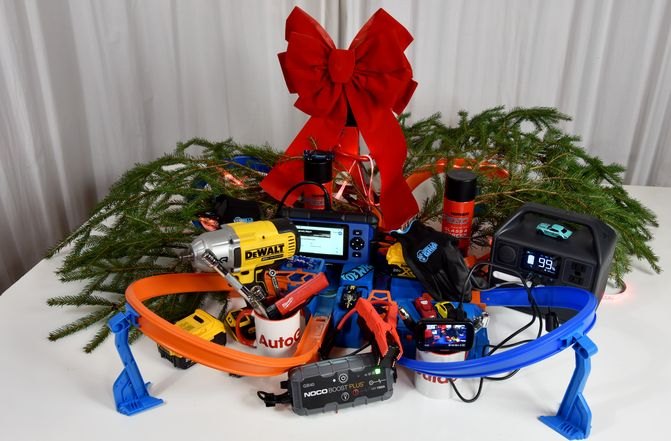




















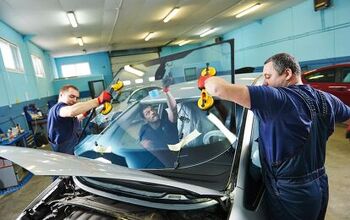



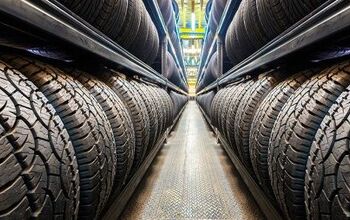



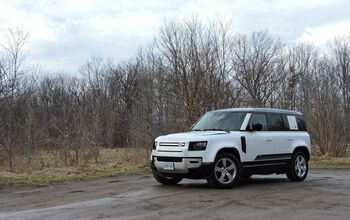







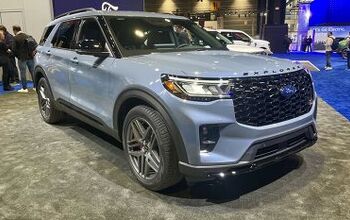

Comments
Join the conversation